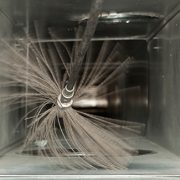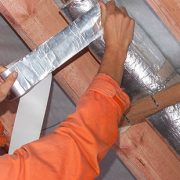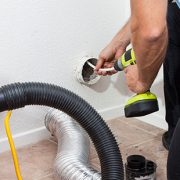Everything You Need to Know About Duct Blaster Tests
Duct blaster tests are suitable for both new-build homes and existing properties. The test is designed to identify leaks in ductwork.
Why are leaks in a duct system so concerning?
If your home’s air ducts are leaking, you will likely experience:
- Higher energy bills. Your heating or cooling systems will have to work harder, for longer, to replace the air that has been lost through ductwork leaks.
- Compromised indoor air quality. If your ducts are leaking, they are prone to suck dust from your attic or crawl space. This dust and debris are then deposited throughout your home via your vents, creating issues with indoor air quality.
- Clogged ductwork. The above issue can also lead to clogs in your system, which require extensive repairs to rectify.
- Health concerns. Leaky ducts can also cause myriad health issues via mold and moisture accumulation, which can be problematic for residents with allergies or lung conditions.
A duct test is the first step to ensuring these issues do not occur in your property.
How does a duct blaster test work?
For existing properties, the duct blaster proceeds as follows:
- The duct blaster fan is attached to the fan at the air handler cabinet or result grille.
- All other supplies and returns are temporarily sealed with special tape for the duration of the test.
- The duct blaster fan is then turned on, which immediately pressurizes the ductwork system.
- A leakage measurement is then obtained from an airflow and pressure gauge, which is connected to the fan system.
- If the pressure reading is low, this indicates a leak in the system.
- Non-toxic fog can then be added to the system, which then allows for the visual identification of the exact source of leaks in the ductwork.
- These leaks can then be repaired.
The process is much the same for properties still undergoing construction but can be conducted – with minor modifications if the air handler has yet to be installed.
Who needs a ductwork blaster test?
Duct blaster tests are suitable for properties still undergoing construction, as well as for existing properties.
In newly-constructed properties, duct leak testing should be conducted when the ductwork system is installed and prior to hanging drywall. Testing at this point ensures that all leaks are identified while the ductwork is still exposed, which ensures remedial action can be taken as quickly and efficiently as possible.
Existing properties can benefit from a duct blaster test at any point in time. The test will seek to produce a combined result for both exterior leakage, for example, to an attic or crawl space; and interior leakage to the main areas of the home. A blower door test is often combined with a duct blaster test so as to isolate exterior leakage.
When the test is complete, repair work on the leaks can be conducted to secure the system.
Who conducts a duct blaster test?
Only certified professionals are able to conduct a duct blaster test, as the process is complex and requires specific expertise.
In conclusion
Identifying leaking ductwork can be incredibly difficult. A duct blaster test is a perfect choice to ensure that the ductwork in your home is in the best possible condition, and is recommended for all homeowners seeking to ensure their home runs as healthily and cost-efficiently as possible.



